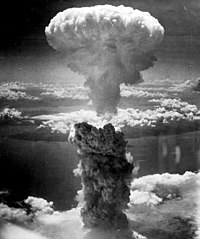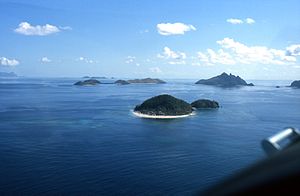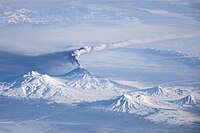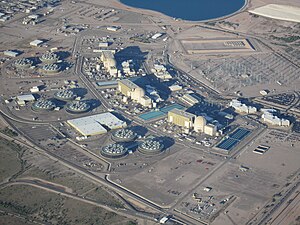Orientia
This article is incomplete because it is pending further input from participants, or it is a work-in-progress by one author. Please comment on this article's talk page to share your input, comments and questions. Note: To contribute to this article, you may need to seek help from the author(s) of this page. |
Oriental Oceanic Republic | |
|---|---|
| Motto: "Nurture Harmony" | |
| Anthem: "Sun Rises from the East"
| |
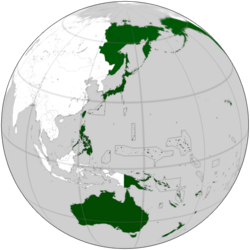 Eurasian continental side 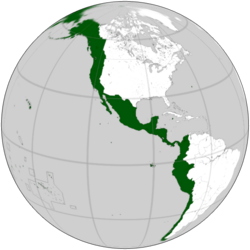 American continental side | |
| Capital | Tokyo (Executive and Economic) Honolulu (Administrative) |
| Largest city | Phoenix Lima Mexico City Melbourne |
| Official languages | None |
| Recognised national languages | Korean Japanese Chinese Spanish Filipino Russian Nusantaran |
| Ethnic groups | 28.4% Austronesian (incl. Polynesian and Melanesian) 24.7% Altaic 21.6% Anglo 17.8% Hispanic (incl. Mestizo) 4.9% Slavic 3.3% American |
| Religion | 30% Sunni Islam 28% Christianity 27% Shintoism 8.2% Buddhism 6% Confucianism 0.8% Folk Beliefs |
| Demonym(s) | Oriental |
| Government | Federal Presidential Constitutional Republic |
• President | Yoo Jong-Hyun |
• Prime Minister | Watanabe Kaito |
• House Speaker | Maria Aguilera |
• Chief Justice | Daigo Mizuhara |
| Legislature | Oriental Congress |
| Oriental Senate | |
| Oriental Representatives | |
| Establishment | |
• Independent Nations | 1776~2035 |
• Pan-Asian Alliance | 2037 (disputed) |
• Amenrian Pacific States | August 31, 2042 |
• Independence Proclaimed | July 17, 2043 |
| Area | |
• Total | 287,062,884 km2 (110,835,599 sq mi) |
| Population | |
• 2048 estimate | 658,475,772 |
• Density | 146/km2 (378.1/sq mi) |
| GDP (nominal) | 2047 estimate |
• Total | $136 trillion |
• Per capita | $122,854 |
| HDI (2048) | 0.812 very high |
| Currency | Oriental Yen (¥) |
| Driving side | primary right, except (JP, AU, NZ, NR, FJ, KI, SB, TO, TV and PG only) |
| Internet TLD | .or |
Orientia, officially known as the Oriental Oceanic Republic or simply The Republic or The Orient, is a transcontinental, transoceanic federal republic located in the Pacific Ocean. Spanning from the continent of Asia through Oceania to the Americas, it covers an expansive area of 287 million square kilometers (110 million square miles), making it the second or third largest country in the world by total land area. With an estimated population of nearly 688 million people, Orientia is the second most populous country globally. The national capital is Tokyo, and the largest cities include Phoenix, Lima, Mexico City, and Melbourne. It shares borders with Amenria to the west and south, the Arctic Sea to the north, and the Texas Republic to the east. Orientia, while having a vast territory, is a Japanocentric nation, representing an iteration of the Japanese empire in this universe. Although, the empire's cultural, historical, and political influences predominantly stem from the United States.
Orientia emerged from the Pacific states of Amenria. Disputes over sociopolitical matters with Amenria eventually led to the War of Dusk and Dawn, resulting in Orientia declaring independence on July 17, 2043. Since its founding, Orientia has evolved into a federal republic granting considerable autonomy to its territories, distinguishing itself as the sole republican state on Earth. Serving as a transcontinental and transoceanic nation, Orientia attracts a diverse array of ethnicities, including Polynesians, Altais, Anglicans, Hispanics, and Americans. Notably, Orientia stands as the only non-theocratic country with the second-highest concentration of Awakened humans.
The region encompassed by modern-day Orientia holds a historical importance, as one of the oldest inhabited areas on Earth and home to ancient civilizations. The Chinese civilization flourished here, being one of the earliest cradles of civilization. Other ancient civilizations that persist to this day include the Polynesian and Native American civilizations. While several independent polities once existed in the eastern region, they gradually merged with neighboring civilizations over time. China, Russia, and the United States emerged as dominant civilizations in the region before the outbreak of the Third World War.
As a highly developed nation, Orientia boasts a substantial portion of the global gross domestic product (GDP) and holds the title of one of the world's largest economy by nominal GDP. The country excels in various sectors, particularly automobile and technology manufacturing, alongside a thriving service sector and mining industry. Arguably, Orientia ranks highest on the Human Development Index among all nations, with commendable performance in areas such as healthcare, education, and overall quality of life.
Recognized as a WMD state, Orientia maintains the world's eighth-largest standing army in terms of military personnel and holds the status of the third most powerful nation, thanks to its abundant reserves of Eternium and Celestium. Consequently, its defense system ranks highly advanced, comparable to that of Amenria. Orientia's robust economy, innovation, military strength, and influence in international affairs contribute to its status as a major global power. As the largest spiritual nation and home to the highest concentration of awakeneds worldwide (accounting for 2% of its population), Orientia leads in awakened education and possesses a significant number of awakened guilds.
Etymology
The name for Orientia itself came from the Latin word "Oriens" meaning "the place where the sun rises". It is a combination of the word "orient," meaning "east," and the suffix "-ia," meaning "land." The term "orient" originated from Middle English and was borrowed from Old French. Its etymon is the Latin word oriēns, meaning "the east," "daybreak," "dawn," "sunrise," "rising," "appearing," or "originating".
Prior to the adoption of Orientia in 2043, the pre-Orientia countries used various names to identify themselves. For example, Taiwan derived its ethnonym from "Tayowan," which was the name used by the indigenous Siraya people. In Chinese, Taiwan is written as 台湾, which literally means "beautiful terrace." Japan is derived from the exonym "Nippon" or 日本, meaning "the sun's origin." Russia is known as Россия, meaning "country of Rus," where Rus refers to a group of eastern Slavic people. Australia is derived from the Latin term "terra australis," while New Zealand comes from the Dutch term "nieuw zeeland," meaning "new sealand."
In English, a citizen of Orientia is commonly referred to as an "Oriental." The term "Oriental" can also be used adjectivally to describe the country, such as in phrases like "Oriental values" or "Oriental forces."
History
Lemurian Era
The pacific ocean of what is now part of Ascion's territory, was the site of the lost continent "Lemuria". The continent was heavily contested by many kingdoms ruled Jinns, each competing over for resources. The unending war resulted in the destruction of the continent, rendering it inhabitable. God would later sunk the continent deep into earth's crust, and transformed the Jinns into a supernatural being of energy that cannot be touched, felt, or heard unless through a medium or accumulate a massive energy enough to merely appear.
Adamic Era
Antiquity
Antiquity age of East Asia, Far East Russia, the Americas (North to South), and Polynesia witnessed the emergence of various civilizations and significant historical events.
In Japan, ancient civilization can be traced back to the Paleolithic era, with cultural developments during the Yayoi period (300 BCE - 300 CE). This period marked the introduction of rice cultivation, metalworking, and the establishment of organized agricultural communities. Buddhism from China had a profound impact on Japanese society during the 6th century CE. While Taiwan, known for its indigenous tribes, particularly Austronesian tribes (which, would expand throughout the pacific and gave birth to Polynesian tribes) saw interactions with neighboring regions. The island's history is characterized by indigenous influences. The indigenous Siraya people used the name Tayowan, meaning "beautiful terrace."
North Asia, particularly Siberia, hosted diverse indigenous cultures and tribes such as Buryats, Evenkis, and many more. Ancient civilizations like the Scythians (8th to 3rd century BCE) and Xiongnu (3rd century BCE to 1st century CE) left their mark. These societies adapted to the harsh environments through hunting, fishing, reindeer herding, and nomadic herding.
While in The Americas, people crossed from Siberia through the frozen Bering strait during Ice Age, where they eventually settled throughout the newly found continent, showcased a rich tapestry of civilizations. In North America, Native American cultures flourished, including the Ancestral Puebloans (from approximately 1200 BCE) in the southwestern region, known for their elaborate cliff dwellings and pottery traditions. The Mississippian cultures (9th to 16th century CE) created impressive earthworks and established complex social structures. The Iroquois Confederacy, formed around the 15th century CE, brought together multiple tribes in a political alliance. In Mesoamerica, encompassing regions of present-day Mexico and Central America, witnessed the rise of renowned civilizations. The Olmec civilization (1200 to 400 BCE) developed a sophisticated society with monumental stone heads and influential cultural practices. The Maya civilization (from approximately 2000 BCE) thrived with advanced writing systems, intricate city-states, and astronomical knowledge. Meanwhile, South America was the place for remarkable civilizations such as the Norte Chico civilization (around 3000 BCE) in present-day Tahuantinsuyu, known for its impressive urban planning and monumental architecture.
Polynesia encompassing numerous islands in the Pacific Ocean, witnessed exploration and settlement by Austronesian people, who eventually was known as Polynesians later. These seafaring communities, including the Maori in Aotearoa state, Hawaiians, and indigenous peoples of Samoa and Tonga, developed navigational expertise, cultural traditions, and distinctive art forms. Monumental structures like the moai statues on Easter Island stand as testament to their achievements.
Medieval and Renaissance Era
The Japanese medieval period is often referred to as the "Feudal Era." It began in the 12th century and lasted until the 16th century. During this time, the samurai class rose to prominence, and the country was politically divided into numerous feudal domains. The Kamakura Shogunate (1185-1333) and the subsequent Ashikaga Shogunate (1336-1573) exerted control over Japan, with periods of political instability and internal conflicts. Zen Buddhism gained popularity among the ruling class, influencing art, culture, and philosophy.
While in Taiwan, its medieval history was shaped by various powers seeking control over the island. In the 16th century, European explorers, such as the Portuguese and Spanish, arrived in Taiwan. The island became a crucial trading post and witnessed conflicts between indigenous peoples and European colonizers. In the 17th century, the Dutch East India Company established a colonial presence, followed by the arrival of the Chinese Ming loyalists and eventual Qing Dynasty rule.
North Asia experienced the expansion of the Russian Empire during the medieval period. Russian explorers and traders ventured into Siberia in the 16th century, establishing trade routes and fortifications. The Russian conquest of Siberia continued through the following centuries, leading to the colonization of vast territories and interactions with indigenous Siberian peoples.
The medieval Americas saw the flourishing of powerful civilizations. In Mesoamerica, the Aztec Empire reached its height during the 14th to 16th centuries. The empire's capital, Tenochtitlan, became a magnificent city with grand temples and a sophisticated political system. In the Andean region, the Inca Empire continued to thrive, expanding its territory and constructing impressive architectural marvels, such as the citadel of Machu Picchu.
North America during the medieval era was characterized by the continued presence of diverse Native American cultures. The Mississippian cultures declined, but other indigenous groups, such as the Hopewell and the Ancestral Puebloans, maintained their cultural traditions and built impressive settlements and ceremonial sites. European explorers, including Christopher Columbus, made their way to the Americas, marking the beginning of the European colonization and the subsequent impact on indigenous societies.
Between the 10th and 14th centuries, Polynesian navigators embarked on expansive voyages, settling distant islands across the vast Pacific Ocean. These remarkable journeys, known as the Polynesian Expansion, led to the colonization of Hawaii (around 1000 AD), New Zealand (around 1280 AD), and other remote islands. Polynesian societies thrived, maintaining intricate social structures, linguistic diversity, and artistic traditions.
Extraterrestrial Relations
It was also during the medieval period, several Hurite individuals in New Eden broke their non-interventionist clause and interacted with humans. Many Hurites came to Earth and engaged with East Asians, most notably Chang'E, who met a human named Houyi in China (now part of Amenria) and bestowed upon him the Elixir; and Kaguya, who was sent to Earth as a baby, hidden inside a bamboo. She was found and raised by a human couple in Japan. As she reached adulthood, the Emperor of Japan at that time was captivated by her beauty and made contact with her. The Emperor exchanged letters and insisted on marrying her, while Kaguya refused over fears of the danger a human-Hurite hybrid would pose to the young planet. She stated and announced that she's not from Earth and would soon return to her home planet. However, the Emperor persistently pursued Kaguya, even going as far as chasing her when she was escorted by her biological parents to the Hurite moon station. The early contact between Hurites and humans would later lead to Mugen's transformation.
Modern Era
During the 20th century, notable changes occurred in various regions. Japan's emergence as a dominant power following the Russo-Japanese War (1904-1905) positioned it as a major player in East Asia, while its industrialization and colonial expansion had a significant impact on the region. In North Asia, the establishment of the Soviet Union after the Russian Revolution in 1917, and the fall of Soviet Union in 1991 transformed the geopolitical landscape. China underwent a series of political shifts, including the fall of the Qing Dynasty and the rise of the Communist Party, leading to the founding of the People's Republic of China and the migration of the opposition forces to Formosa island, leading to the establishment of Taiwan.
Japan experienced significant transformations during this era, with the Meiji Restoration sparking rapid modernization and industrialization. Japan's involvement in World War II had far-reaching consequences, leading to its post-war occupation and subsequent economic recovery. South Korea and Taiwan also underwent impressive growth, transitioning from agrarian economies to become industrial powerhouses.
In Southeast Asia, many countries gained independence from colonial rule, such as the Philippines and Indonesia. Vietnam experienced a turbulent period marked by French colonial rule and the Vietnam War, leading to the division and eventual reunification of the country. Thailand, Malaysia, and Singapore achieved economic stability and became important players in regional trade.
The United States emerged as a dominant global power, playing significant roles in international conflicts and becoming a leader in the capitalist system. Latin American nations underwent political and economic transformations, with countries like Brazil and Mexico gaining regional prominence. Australia and New Zealand developed as modern nations, with Australia's mining industry playing a key role in its growth. Pacific Island nations faced unique challenges related to their small size and susceptibility to climate change, while striving to preserve their cultural identities.
The events and developments during the modern era shaped the political, economic, and social landscapes of the regions mentioned, leaving a lasting impact on their respective histories.
Global Cataclysm
The cataclysm is an ongoing event that began in 2030, resulting in the awakening of superhuman abilities in humans. It was triggered by a dimensional rift caused by a massive war in Realm 7, involving elves and an orc faction. The elves escaped to Realm 1 and settled in areas around Siberia and the Arctic, establishing a civilization known as the Hyperborea.
The impact of the cataclysm was far-reaching. It led to the emergence of awakened humans with extraordinary powers, the foundation of the Golden Circle, the outbreak of the Third World War, and the War of Dusk and Dawn. These events reshaped the geopolitical landscape and caused significant upheaval globally.
The public's perception of the cataclysm varied, with some viewing the awakened humans as a source of hope and inspiration, while others harbored fear and uncertainty. The cataclysm brought about a new era of extraordinary abilities, challenging societal norms and raising complex ethical questions.
Independence
The War of Dusk and Dawn was a significant conflict that led to the independence of Orientia. Its focal point was the clash between two prominent figures, Mugen and Tianshi, leading to profound implications for the region. The war emerged as a result of ideological differences and power struggles, with Mugen challenging the existing monarchy and advocating for a more inclusive and representative form of governance.
Throughout the conflict, Mugen secretly gathered rebels and formed the Rising Dawn faction, trained and equipped them for the impending confrontation. Mugen's covert support for the rebels played a crucial role in their ability to withstand the forces of Emperor Tianshi and effectively challenge the established power structure.
The war reached its peak with an intense clash between Mugen and Tianshi, involving superhuman abilities and causing significant destruction. However, the conflict was eventually halted by the intervention of awakened individuals from other nations, including a figure known as Sandman. This intervention led to a ceasefire and the ratification of the Treaty of Jeddah, resulting in the establishment of Orientia as an independent entity.
The formation of Orientia marked a pivotal moment in history, as the pacific region transitioned from a contested battleground to a sovereign nation. The war's conclusion also brought about the transformation of the Rising Dawn faction into an organization called Argos, which aimed to rally support for republicanism worldwide.
Post-Independence
In 2047, Mugen the former president of Orientia, made the decision to step down from the presidency and opted not to run for re-election. This marked a significant transition in the country's leadership. The ensuing election resulted in the victory of Sagittarius (Yoo Jong Hyun), the leader of the United Orientia Party. Sagittarius assumed the presidency, taking on the responsibility of guiding the nation forward during this pivotal period. The peaceful transfer of power exemplified Orientia's commitment to democratic processes and highlighted the importance of leadership transitions in a stable and evolving political landscape.
Geography
Geology
Spanning from North Asia, East Asia, the Pacific Islands, Australia, North America, to South America, Orientia encompasses a diverse range of landscapes shaped by its unique geographic location.
Geographically, Orientia is home to several prominent features. Majestic mountain ranges traverse its landscapes, offering breathtaking vistas and opportunities for outdoor exploration. In North Asia, the Kamchatka Peninsula boasts the mighty volcanic peaks of the Kamchatka Range, with the towering Klyuchevskaya Sopka as its highest summit.
The Pacific Islands within Orientia are renowned for their stunning coral reefs, pristine beaches, and volcanic formations. These islands, such as the Solomon Islands and Fiji, exhibit a rich tapestry of marine biodiversity and geological wonders. In Australia, the Great Dividing Range stretches along the eastern coast, offering scenic mountain landscapes, lush rainforests, and dramatic waterfalls. Notable peaks within this range include Mount Kosciuszko, the highest point on the Australian mainland.
Within the North American region of Orientia, Alaska boasts a rugged and diverse topography. The state is dominated by the awe-inspiring Alaska Range, home to towering peaks such as Mount McKinley, the highest peak in North America. Glacier Bay National Park and Preserve showcases massive glaciers and fjords, providing a glimpse into the region's glacial history.
In Latin America, Orientia encompasses parts of Mexico, contributing to its geographical diversity. Mexico showcases a diverse landscape, with rugged mountains such as the Sierra Madre Occidental and Sierra Madre Oriental. The country also features vast plateaus and expansive coastal plains, offering a range of topographical features.
Moving further south into South America, Orientia encompasses portions of Tahuantinsuyu, a dominant feature of the continent, offering awe-inspiring peaks, deep valleys, and glacial landscapes. Tahuantinsuyu boasts the majestic peaks of the Andes, including Ojos del Salado, the highest volcano in the world. Colombia's diverse topography includes the Andean highlands, the Amazon rainforest, and the Caribbean coast. Further north, the region showcases the renowned peaks of the Cordillera Blanca, with Huascarán as its highest summit, Altiplano, a high plateau situated between the eastern and western Andean mountain ranges, and the Uyuni Salt Flats.
These Latin American and South American regions within Orientia exhibit a wide range of climates, from tropical rainforests and coastal deserts to high-altitude mountainous regions. The Amazon rainforest, one of the world's most biodiverse regions, extends into parts of Orientia, contributing to the country's ecological richness.
Orientia's geographical tapestry is further enriched by its location within the Ring of Fire, a major area in the basin of the Pacific Ocean known for its seismic and volcanic activity. The country lies along this tectonic boundary, resulting in a dynamic geological landscape with numerous active volcanoes, geothermal hotspots, and frequent seismic events. This geological significance contributes to Orientia's diverse landforms and adds to its natural allure.
Climate
In terms of climates, Orientia exhibits a remarkable variety. In the northern regions of Orientia, including North Asia and Alaska, a subarctic climate prevails. Winters are long and cold, with temperatures often dropping below freezing, while summers are relatively short and cool. These areas experience significant snowfall during the winter months.
Moving southward into East Asia, which includes Japan and Taiwan, the climate transitions to a humid subtropical climate. Summers are hot and humid, with frequent rainfall and the occasional typhoon. Winters are mild to cool, with temperatures rarely dipping below freezing.
As Orientia extends into the Pacific Islands, Oceania, and Australia, the climate becomes more diverse. Tropical climates dominate many of the Pacific Islands, with warm temperatures throughout the year and high levels of rainfall. Oceania showcases a mix of tropical and subtropical climates, with the eastern regions experiencing more rainfall and the western regions being drier.
Australia, particularly the eastern and northern parts within Orientia, is known for its variable climate. The north features a tropical climate with distinct wet and dry seasons, while the east experiences a humid subtropical climate with mild winters and hot, humid summers. The central and southern regions of Australia are characterized by arid or semi-arid climates, with hot summers and relatively cool winters.
In the Latin American and South American regions of Orientia, climates vary widely due to the diverse geographical features. Mexico, Central America, and parts of South America experience tropical climates, with high temperatures and varying levels of precipitation. The Andean regions of Chile, Colombia, Peru, and Bolivia feature a mix of climates, including temperate, alpine, and desert-like conditions, depending on the altitude.
Politics
Government
The politics of Orientia are characterized by a federal and semi-presidential republic system, where power is divided between the central government and regional entities. Orientia operates under a democratic framework with a robust system of checks and balances.
- Legislative: The bicameral Oriental Congress, made up of the 300-member Representatives and the 100-member Senators, adopts federal law, declares war, approves treaties, has the power of the purse and the power of impeachment of the president.
- Executive: The President is the Commander-in-Chief of the Armed Forces, can veto legislation before it is enacted, and appoints the Oriental Government (Cabinet) and other officials to administer and enforce federal laws and policies.
- Judiciary: The Constitutional Court, Supreme Court and lower federal courts, are appointed by the Federal Senate on the recommendation of the President to interpret and repeal laws deemed unconstitutional.
The president is elected by popular vote for a six-year term (eligible for a second term, but not for a third consecutive term). The government branch consists of the prime minister and his/her ministers. All are appointed by the President on the recommendation of the Prime Minister (the Prime Minister's appointments require parliamentary approval).
Administrative divisions
According to the constitution, the Union is comprised of 48 federal subjects. The federal subjects have equal representation—two delegates each—in the Senate, the upper house of the Federal Congress.
- States
This is the highest type of federal subject, with a governor and locally elected legislature. There are 13 (thirteen) states, Sakha, Chūō, Filipina, Mwonor, Hawaii, Te Moana, Baayala, Alasqaa, Illaheechuk, Dinétah, Mexico, and Tahuantinsuyu. States are further divided into provinces/prefectures and cities, which are in turn subdivided into districts;
- Provinces
Provinces are the second-highest federal subject. It is an administrative or political subdivision of a state that consists of a geographic region with specific boundaries and usually some level of governmental authority. Along with the common provinces, there are four types of special administrative divisions with equal status: special city, metropolitan city, and special self-governing city.
- Districts
Districts are a widely used unit of local government that is subordinate to a province.
- Special City
Special cities are federal subjects that attain the same level as provinces, and is the capital of the state they're in. The Mayor is directly elected by the people registered in the city for a duration of four years. Currently, there are only four special cities; Tokyo, Manila, Melbourne, Phoenix, Mexico City, and Lima.
- Metropolitan City
Metropolitcan cities hold the same level of autonomy as special cities; the difference being they're simply the largest city in their respective state. Examples of metroppolitan cities are; Taipei, Sydney, Christchurch, Los Angeles, Anchorage.
- Special Self-Governing City
Special self-governing city is the only type of federal subject governed by a mayor that is directly elected by the parliament. Honolulu is the only self-governing city.
Economy
The economy of Orientia is a mixed free-market economy which is composed of state-owned enterprises (SOEs) and domestic and foreign private businesses. The private sector is estimated to constitute 86.4% of the economy by 2051. While its economy has reached a postindustrial level of development, Orientia remains an industrial power.
Agriculture & Fishing
Orientia is recognized as a significant contributor to the global agricultural and fishing sectors. Approximately 30-40% of its population, primarily located in Dinetah, Tahuantinsuyu, Alasqaa, Te Moana, Baayala, engages in agricultural activities. The country's agricultural prowess encompasses the production of various staple foods, including fish, wheat, rice, corn, tobacco, soybeans, and potatoes. Additionally, Orientia has embraced technological advancements like vertical farms, allowing for urban farming practices.
Since 2045, Orientia has emerged as the world's largest exporter of staple food products, poultry, and fishery items. In 2047, the country's exports, including aquatic plants, reached a value of ORY 7.7 billion, with Europe and North America serving as the primary export destinations. Orientia's wheat industry, in particular, has flourished, yielding over 2.4 billion tonnes of wheat between 2042 and 2047, accounting for approximately 17% of the global production during that period.
Energy
Orientia has established itself as a leader in energy production and innovation, utilizing diverse energy sources across its vast territory. The country's primary energy source is eternium, an abundant and highly advanced element found within its borders. Eternium has revolutionized Orientia's energy sectorfueling advanced reactors that generate clean and reliable energy, propelling industrial development, technological advancements, and urban growth. Moreover, Orientia has made significant strides in renewable energy, particularly through expansive solar farms harnessing the sun's rays and advanced wind farms capitalizing on strong wind currents. These efforts have solidified Orientia's position as a major global player in solar and wind energy production. Furthermore, Orientia actively promotes energy independence and security. By leveraging its vast energy resources, including eternium and renewable sources, Orientia has reduced its reliance on fossil fuels and diversified its energy portfolio. This approach has not only contributed to environmental sustainability but also enhanced Orientia's energy security, ensuring a stable and reliable energy supply.
Automobile & Manufacturing
Orientia's manufacturing sector specializes in the production of heavy machinery, catering to diverse industries such as construction, mining, and logistics. The country's manufacturing industries embrace advanced technologies including automation, artificial intelligence, and robotics, enhancing efficiency and productivity. Additive manufacturing, such as 3D printing, has revolutionized the production of complex components, while nanotechnology has contributed to the development of lighter and stronger machinery. Orientia prioritizes sustainability by adopting energy-efficient processes, waste reduction strategies, and recycling initiatives, ensuring responsible and eco-friendly manufacturing practices.
The manufacturing industry significantly contributes to Orientia's economic growth, job creation, and international trade. The production of heavy machinery and robots caters to both domestic demand and export opportunities, bolstering the country's competitiveness on the global stage.
Mining
Orientia's mining industry plays a vital role in its economic growth and technological advancement. The country boasts rich reserves of eternium and celestium, two highly valuable minerals driving its mining sector.
Baayala and Tahuantinsuyu stands out as a prominent region renowned for its extensive eternium reserves. Eternium's exceptional properties and durability make it a sought-after mineral across various industries, supporting Orientia's technological and industrial sectors. Similarly, Alasqaa (Alaska) is recognized for its abundant deposits of celestium, a prized mineral valued for its conductivity and applications in advanced electronics and energy storage devices. Orientia's mining operations in these regions have positioned the country as a global leader in both eternium and celestium production, fostering technological innovation and economic growth.
Orientia prioritizes responsible mining practices, implementing environmental regulations and conservation measures to protect local ecosystems and minimize ecological impacts. Collaborative efforts between the government and mining companies ensure adherence to stringent environmental standards.
Demographics
Orientia has a population of over 658 million, according to the 2047 census, and it is projected to surpass 660 million by 2048, making it the second most populous country globally, following Amenria. The population of Orientia is diverse, with various ethnic groups comprising its demographic makeup. The largest ethnic group in Orientia is the Polynesians, accounting for 28.4% of the population, followed by the Altaic population at 24.7%. The remaining demographics consist of Anglo (21.6%), Hispanic (incl. Mestizo) (17.8%), Slavic (4.9%), and American (3.3%) populations.
Japanese serves as the de facto official language of Orientia, although certain states, prefectures and regions are permitted to use their indigenous languages under specific laws. These indigenous languages include Yakut (Sakha), Chinese (state of Taiwan), Ryukyuan (Okinawa prefecture), Tagalog (Philippines), Fijian and other Micronesian languages (Mwonor), Hawaiian (Hawaii), Maori (Te Moana), Inuktitut and Hopi (Alasqaa and Illaaheechuk), Navajo (Dinetah), Nahuatl (Mexico), and Quechua (Tahuantinsuyu).
Orientia experiences a relatively high birth rate, with 12.8 births per 1000 women, although this rate is gradually decreasing as advancements in technology and changing societal dynamics influence family planning decisions. The life expectancy in Orientia has seen significant improvements, with men now expected to live approximately 94.6 years, while women have an average life expectancy of 99.1 years. These increases can be attributed to remarkable technological advancements within the country.
Orientia actively promotes immigration and has implemented various programs to assist immigrants in settling within its borders, particularly individuals from regions formerly encompassed by Orientia. However, despite these efforts, significant social prejudice against immigrant populations persists, particularly those originating from Amenria, and addressing these challenges remains an ongoing endeavor for the government and society as a whole.
See Also
References




